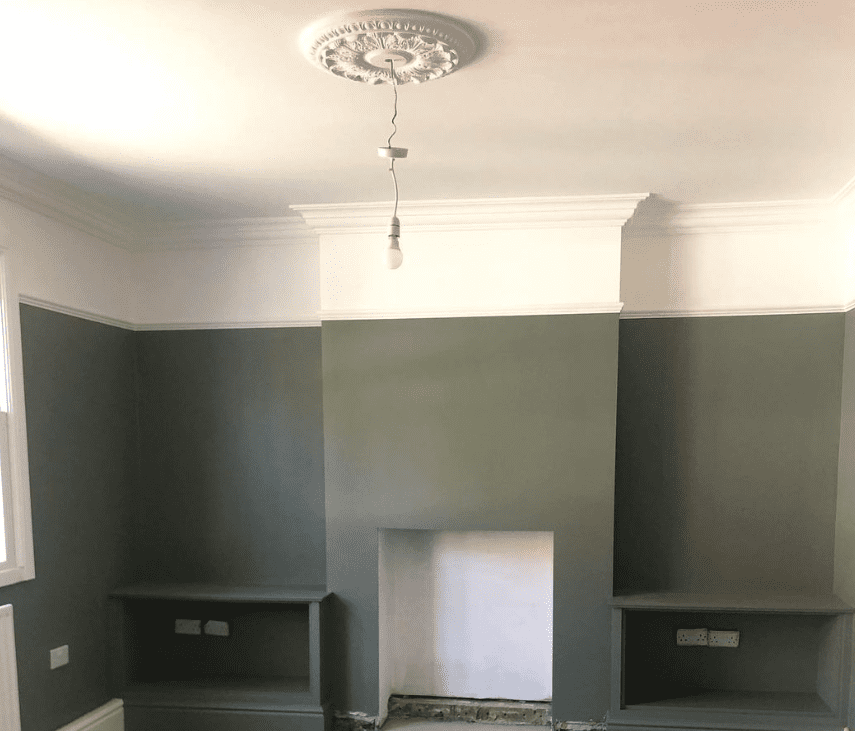Decorative plaster coving has long been a hallmark of refined interior design, bringing elegance and definition to the transition between walls and ceilings. From the restrained symmetry of Georgian homes to the bold geometry of Art Deco interiors, each era has left its stamp on plasterwork. In this guide, we explore the most popular traditional coving styles to help you choose the right one for your project.
Georgian Coving (1714–1830)
Key features: Symmetry, subtle curves, and classical influence
Georgian coving is all about proportion and simplicity. Inspired by classical Greek and Roman architecture, this style typically features smooth, shallow concave curves (known as ovolos) with clean lines and minimal ornamentation. Ideal for rooms with high ceilings and a sense of grandeur, Georgian coving creates a refined, understated backdrop that works well in both period and modern homes.
Common motifs: Egg and dart, dentils, and fluted lines (but often very subtle)
Best for: Formal living rooms, hallways, dining areas, and properties with neoclassical or early Georgian character
Victorian Coving (1837–1901)
Key features: Decorative, layered, and often large in scale
With the rise of industrialisation, the Victorian era saw an explosion of architectural embellishment. Coving became more elaborate, with bolder projections and richly detailed designs. Layered profiles, floral motifs, acanthus leaves, and dentil borders are common. Victorian coving suits high-ceilinged homes and adds a strong period identity to a room.
Common motifs: Egg and dart, acanthus leaves, scrolls, dentils, floral garlands
Best for: Traditional living rooms, stairwells, formal bedrooms, and large heritage properties
Edwardian Coving (1901–1910s)
Key features: Lighter, cleaner lines with classical echoes
The Edwardian period introduced a softer and more restrained take on Victorian style. While still decorative, Edwardian coving is usually less ornate and more geometrically balanced. This style often incorporates modest steps, linear detail, and gentle ogee curves. It brings sophistication without overwhelming a space.
Common motifs: Step mouldings, small egg and dart patterns, modest floral or beaded detailing
Best for: Transitional spaces, bedrooms, and early 20th-century homes with wider hallways and large bay windows
Art Deco Coving (1920s–1940s)
Key features: Bold, geometric, and streamlined
Art Deco brought a break from tradition with a love for symmetry, speed, and stylised design. Coving from this era tends to be more angular, with sharp step profiles and linear forms. There’s often a sense of movement and rhythm in the design, achieved through layered steps and strong horizontal lines.
Common motifs: Stepped profiles, sunbursts, zigzags, chevrons, and geometric banding
Best for: Stylish 1930s properties, modern apartments, or bold design schemes looking to incorporate vintage glamour
Choosing the Right Style for Your Home
When selecting coving, consider the age and architectural details of your property. Matching period features can elevate a room, while mixing styles should be done carefully to preserve harmony. Keep in mind ceiling height, room size, and the desired visual impact—some profiles are deliberately subtle, while others are statement pieces in their own right.
At PlasterCoving.co.uk, we handcraft a wide range of period-accurate plaster coving using traditional techniques and the finest British gypsum. Whether you're restoring a Georgian townhouse or adding character to a contemporary home, we’re here to help you find the perfect profile.










